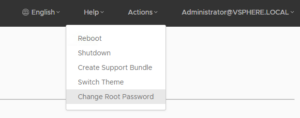The Digital Workspace is becoming an essential solution in solving multiple challenges. The first being the great diversity of applications that needs to be maintained by IT. The second being the great diversity of devices and ownership types. Graduates that start their corporate journey expect to work in the same way as they were used to on colleges and universities. The third challenge is to increase security on the IT infrastructure while maintaining a positive User Experience. These are three typical challenges that many enterprises face. Within the medical industry, that isn't any different.
With the latest releases of VMware products, medical institutes can migrate their (most commonly) traditional IT silos to the Digital Workspace, which makes the user's workplace more flexible, secure and accessible from almost every location and creating a great user experience.
Traditional applications and desktops
VMware Horizon can deliver Windows or Linux desktops, published applications hosted on a Citrix or Microsoft RDSH farm and with the newest VMware Horizon 7.9 release it is even possible to publish applications from a Windows 10 Desktop pool for applications that do not run on a server OS.
Virtual Desktops or applications are following medical employees on different devices throughout the medical institution. These can be a desktop, a laptop, a COW (Computer on wheels) or a tablet. Inside and outside the institute, people can connect to their applications and consult important medical patient information which is centrally secure stored in the datacenter.
Medical devices and security
Medical endpoints connected to medical equipment are integrated into the VMware Workspace ONE environment as well, including serial port or USB redirection.
The same user experience is delivered on various devices. Combined VMware products will deliver personalization and dynamic policy configuration across any virtual, physical, and cloud-based environment, making sure employees can simply access their workspace without any negative user experience concessions. Applications are offered real-time with a complete life cycle management.
Using biometrics and/or card authentication, access to the virtual desktop and applications is easier than ever with a single tap of a finger(print) or ID badge. Single sign-on offers employees access to all other authorized applications, including HiX, Epic, PACS, and others. With no typing or passwords necessary, medical specialists can focus on patient care, aiding to sanitary requirements as well.
The newest versions of VMware products also offer enhanced support for Skype and Microsoft Teams with real-time audio & video for collaboration with colleagues or remote consult with patients.
Would you like to know more?
ITQ can show you what the benefits are for your organization when migrating to VMware Workspace ONE. Our experienced team of End-User Computing consultants can give you more information about the latest features and can assist you in your journey to the Digital workspace.




